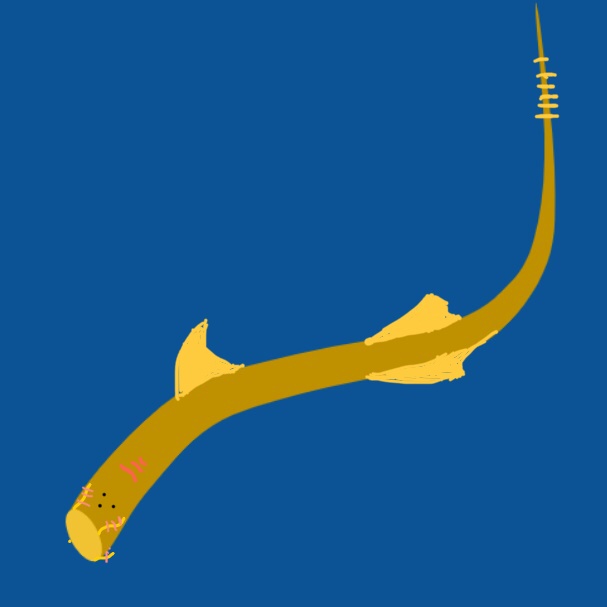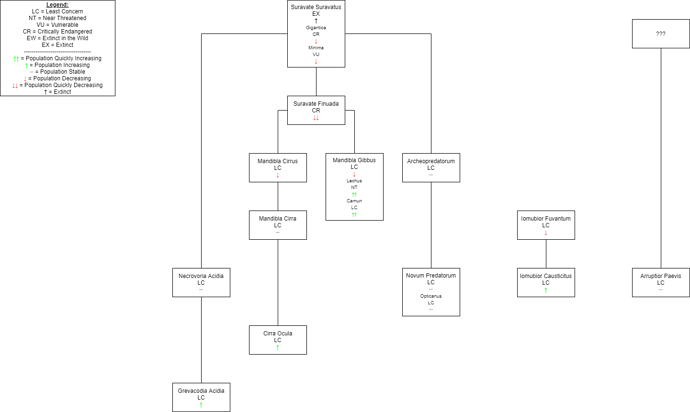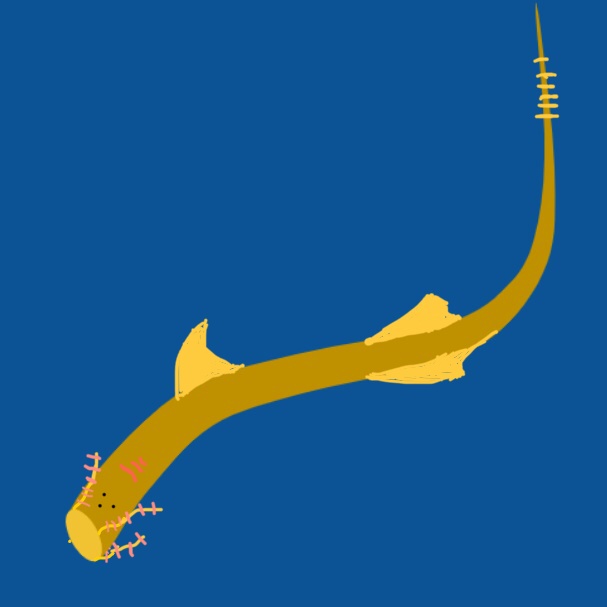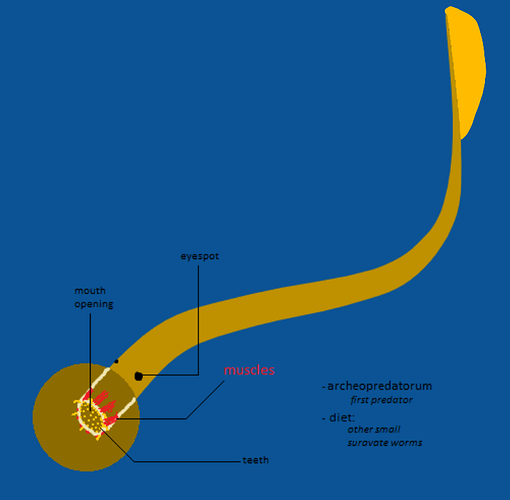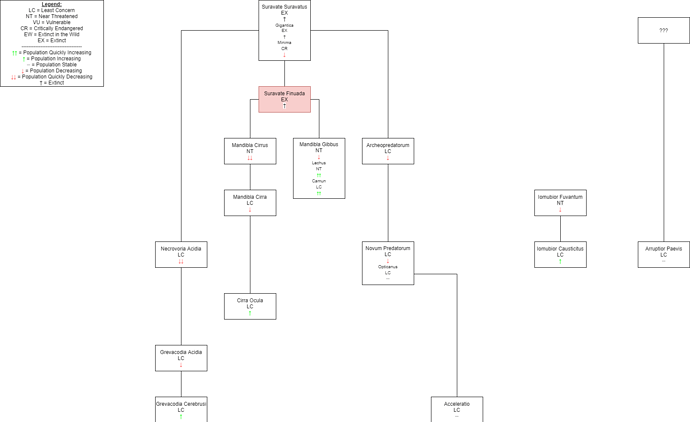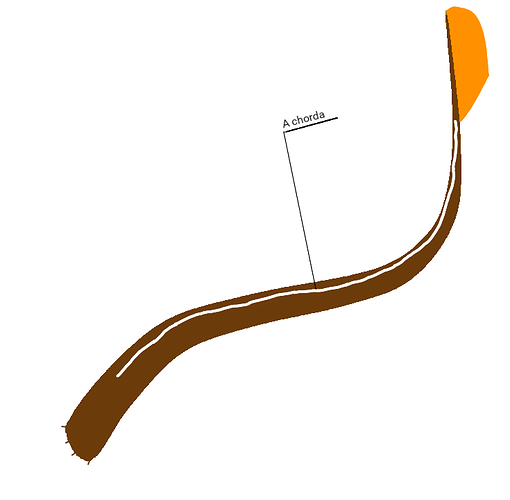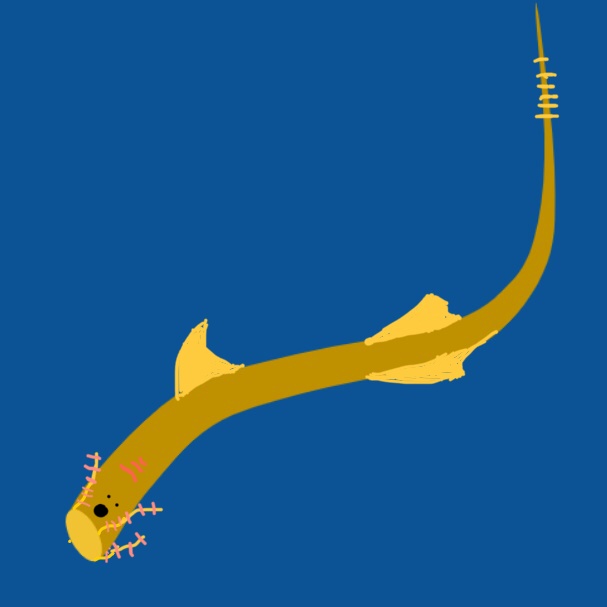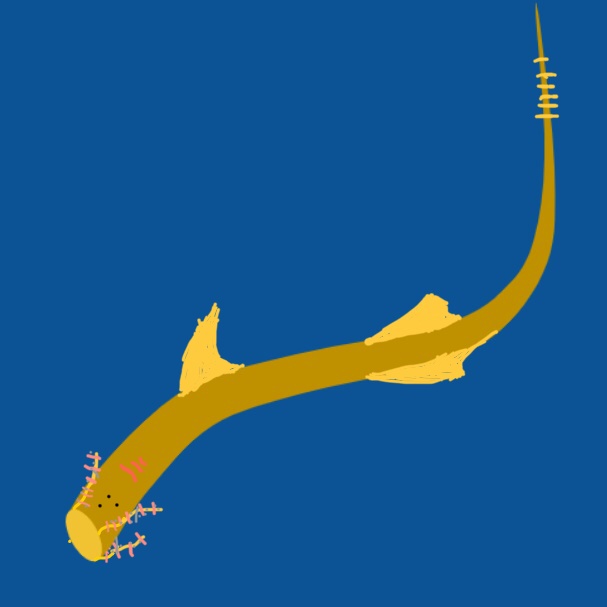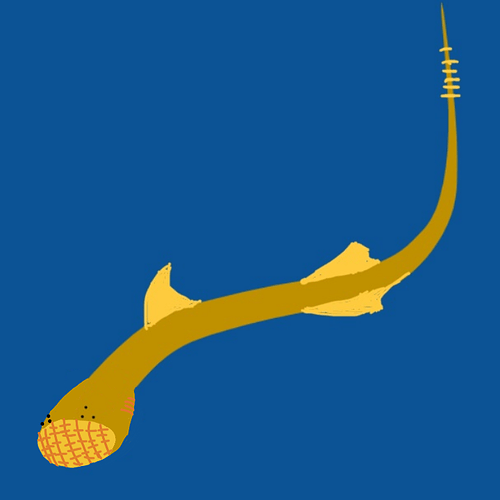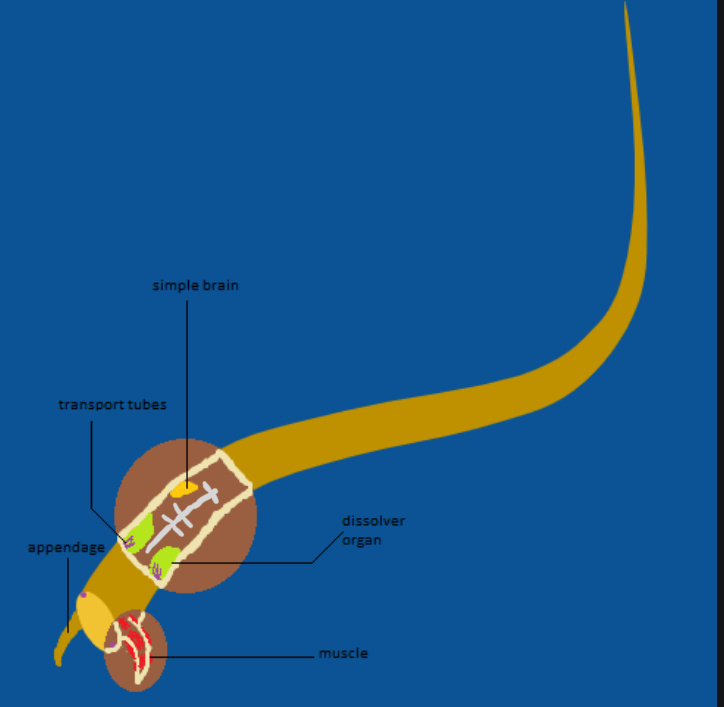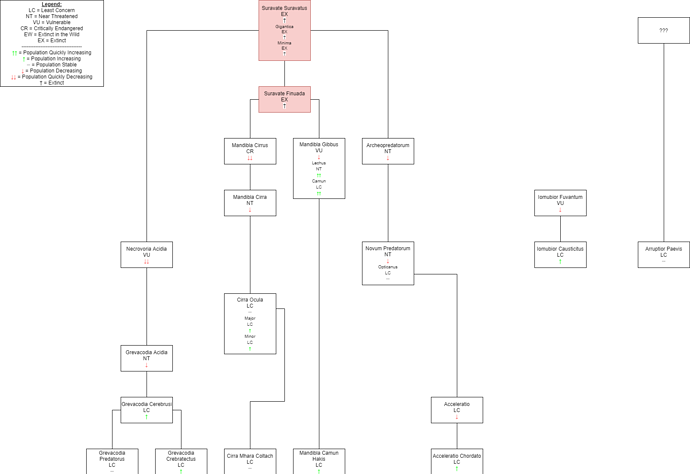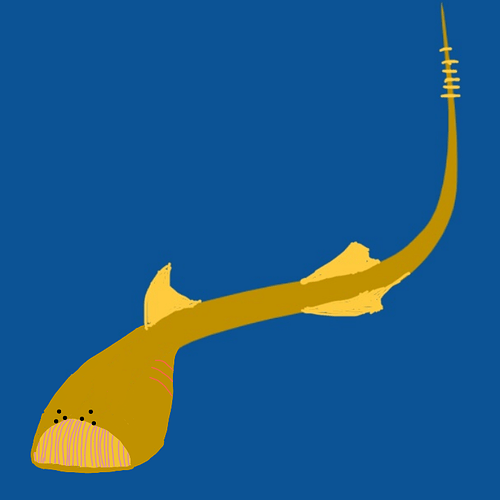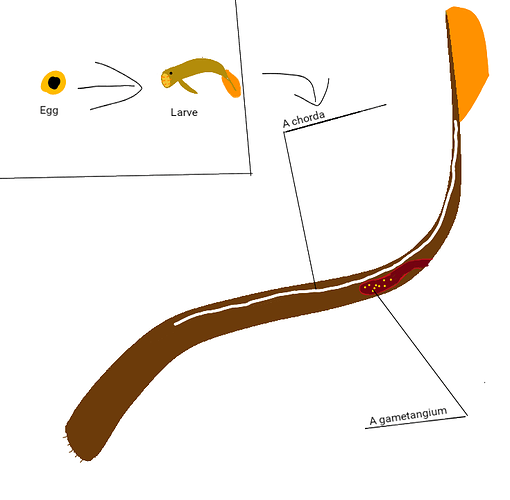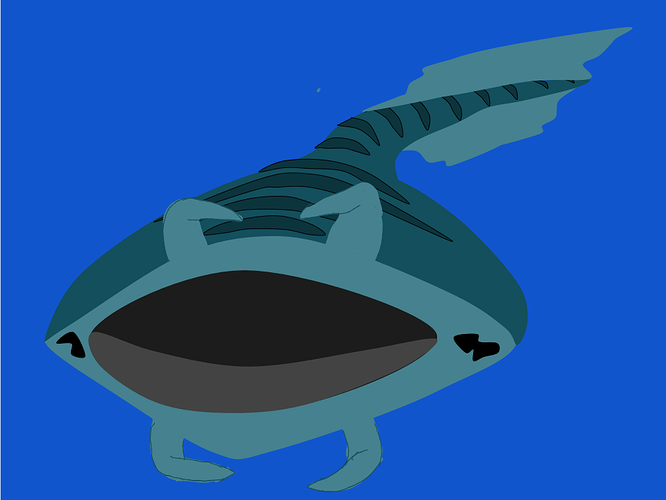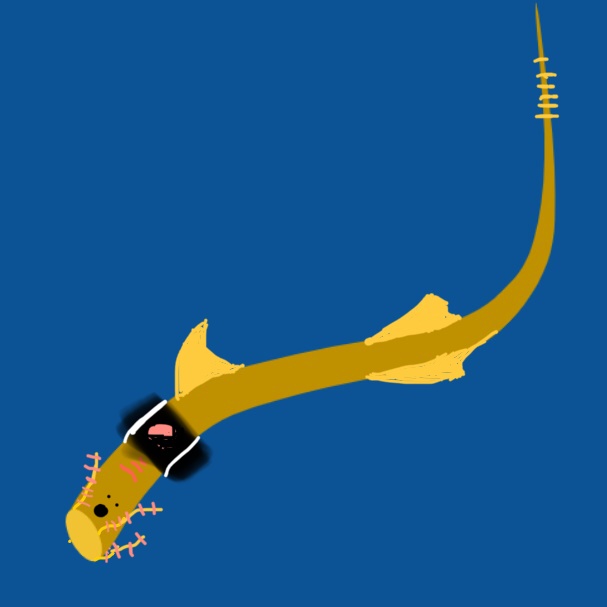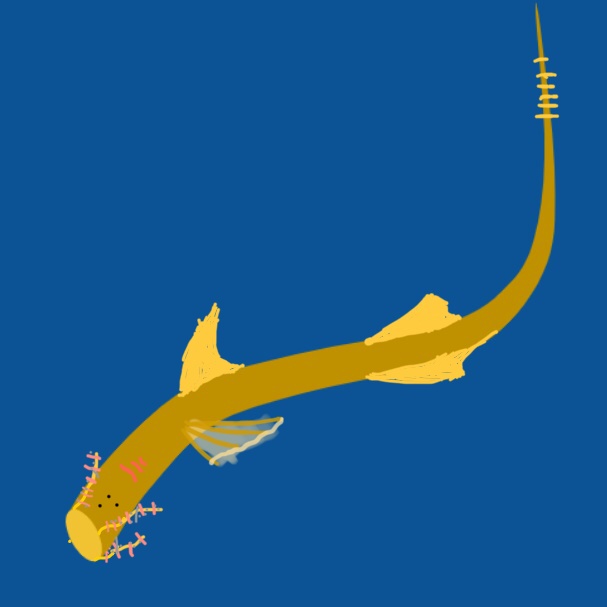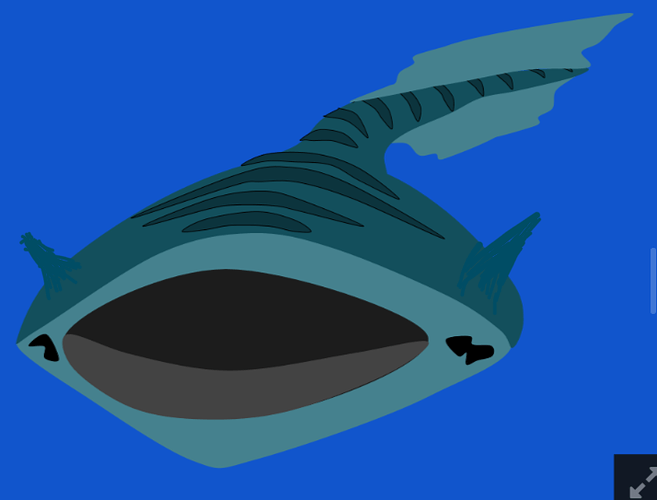new species: novum predatorum (opticanus)
old species: novum predatorum
changes: opticanus evolved an eyespot to help it see Arruptior Paevis to escape and to see prey.
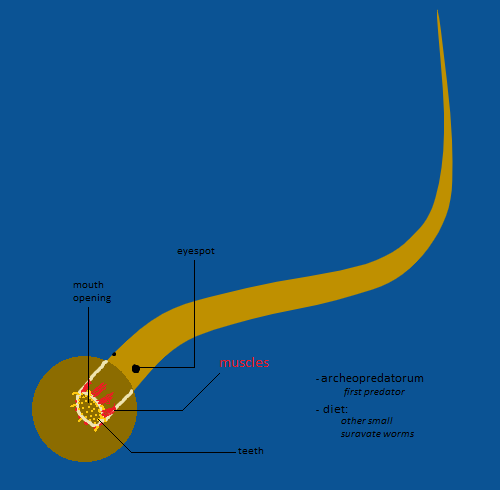
new species: grevacodia acidia
old species: necrovoria acidia
changes: grevacodia evolved an appendage called the grevacod, it helps it capture things and dig through the sand to hide from the Arruptior Paevis
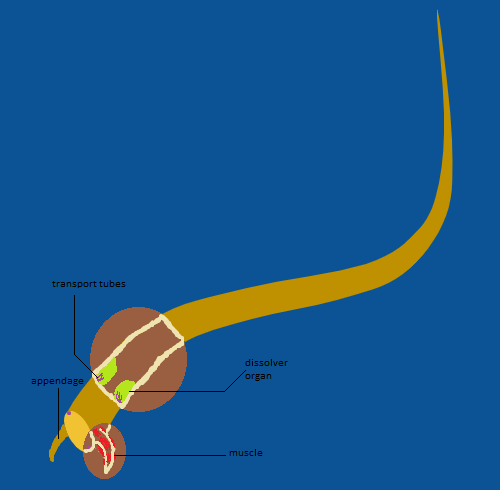
new species: Mandibla Gibbus Camun
old species: Mandibla Gibbus Camun
changes: Camun can now slow down its metabolism in order to go long periods without food.
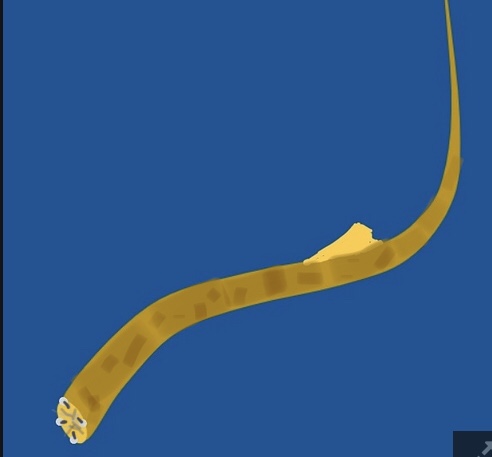
new species: Mandibla Gibbus Lechus
old species: Mandibla Gibbus Lechus
changes: Lechus has evolved to leech off of the Arruptiors. No visual changes.
new species: Cirra Ocula
old species: Cirra Ocula
changes: Cirra Ocula has evolved thin, weak appendages on the end of its tail. This helps with swimming slightly faster and helps stay stabilized.
Also can we evolve Arruptior Paevis?
There are new species swimming in the water. Novum Predatorum Opticanus has evolved, following a similar path to Cirra Ocula. It has gained an eyespot, in contrast with the three eyespots on Cirra Ocula. This is slightly stronger than Ocula’s, but it has a lesser spread. It continues to prosper, dodging the Arruptior whenever it can see it. The Necrovoria Acidia has also evolved to have an appendage on the front of it’s body, which has allowed it to grapple with the ground, and with big clumps of nutrients. It has developed a unique form of movement underwater, whenever it feels that a predator is around. Twisting the Grevacods into a spiral, it begins to almost drill sideways through the sand, and settling down once there is a long enough space for it. It has helped it live many a time, however the non-sandy coloration (unlike the Gibbus Camun) has caused it to be spotted sometimes. Gibbus Camun can now go long periods without food, and Gibbus Lechus can now hook onto the Arruptiors, although they are still prey. Cirra Ocula has gained rigid appendages on it’s tail, which allows it to stabilize itself even better in the water. Combined with a rudimentary eye, this species can now be seen zipping through the water. If only it were more aerodynamic…but I digress.
A unique relationship has been formed between the Gibbus Camun and the Grevacodia Acidia. Grevacod worms travel underneath Camun swarms, and when the Arruptiors or Predatorum come around, the Camun use their sandy coloration to hide in the divots made by the Grevacodia, and make it seem, to any unsuspecting predator, that there is just a sandy-colored spot on the floor of the ocean. Most times they swim past. The Camun reciprocate this relationship by finding corpses, which the Grevacods can also feast upon. An interesting symbiosis. However, this has only occurred a few times, seeing as the Camun live on the ocean floor, and the Grevacodia, while closer to the ground than their minima relatives, still float much higher than the Camun. Only three times has this been seen.
After two more rounds, the Arruptior is open to evolution! I’m probably going to make daily updates like this, instead of my twice-a-day posts. It’s getting really creative, though. I like it!
new species: Mandibla Gibbus Camun
old species: Mandibla Gibbus Camun
changes: Camun has evolved small fleshy Appendages that help break up it’s shape.
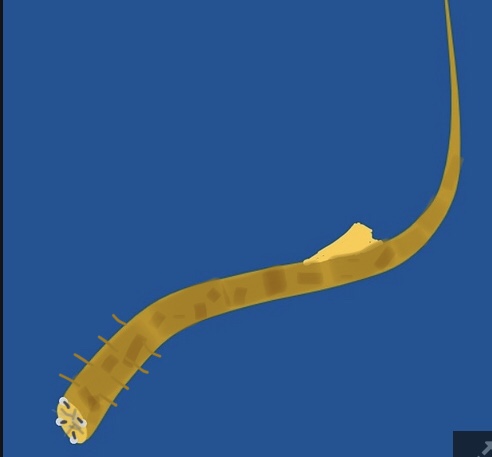
new species: Cirra Ocula
old species: Cirra Ocula
changes: Cirra Ocula’s tentacles have evolved to be longer, and Ocula has slight motor control over them.
new species: novum predatorum opticanus
old species: novum predatorum opticanus
changes: opticanus evolved a bigger size, now it ranges from 1.5 mm to 2.1 mm
new species: grevacodia cerebrusi
old species: grvacodia acidia
changes: cerebrusi developped a small brain, it helps it remember things.
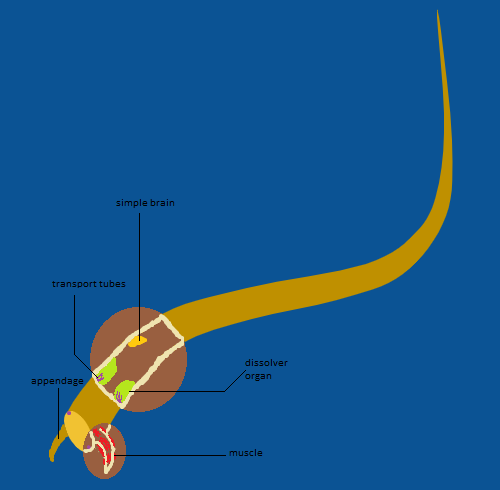
and grevacodia worms evolve a symbiotic relation with The Camun.
New species: acceleratio
Old species: novum predatorum opticunus
Changes: at the back of the tail they evolved a small tailfin so they can accelarate faster and run away
(Btw It is a new clade)
Welcome to Kakhitt, Thunder! Many species will prosper by your hand, I am sure.
The Mandibla Gibbus Camun has gained some weird bumps on it’s body. While these don’t exactly harm it, they don’t really serve a purpose…yet. The Cirra Ocula has had muscle mass grow in it’s tendrils, and it can now straighten and soften them at will, and rotate them just the slightest bit. Otherwise, it seems to be the same. The Opticanus have grown much larger, and can now feast on their smaller brethren with ease. Another clade has also been formed, the Acceleratio. It has a tailfin now, and it uses it to speed up after prey. Standard stuff. However, there has been one more, massive evolution. The grevacodia have developed a brain. A very small one, but still, it is a brain. It has the capability of analyzing the situation now, and it can remember divots it has made, and divots it has not. This has caused for a very interesting relationship with the species closest to it, the Camun. For one, Grevacodia have territories now, which they will defend from other grevacod-worms by locking the grevacods and pushing away. Whoever loses energy first loses. They also have a small group of Gibbus Camun that swarm around, finding bits of food for the Grevacod-worm and the Camun to eat. The Grevacod continues to dig divots big enough for the Camun and for itself, so that they don’t get killed. This has been a very effective symbiosis, which has preserved many the life of a Camun when a predator comes but they have more protection, and has benefited many Grevacodia when it’s Camun come back with a meal.
The last Finuada falls to the floor, defeated by an opticanus. It begins to gorge, tearing off the fin of the creatures and filling itself up. Meanwhile, sometime around this, the last Gigantica also falls, but to a different foe, the Causticitus algae. When it tried to feed, it found out that it was the one being dissolved, and slowly sank to the sea floor, gone forever. No Surav worms have fossilized, because they don’t have skeletons, although imprints remain. There are, however, Arruptior fossils, cleansed by the Lechus, Camun, and Cerebrusi. These have been swept underwater, and later on, sentient life may find them. However, the only things close to those in the ocean are the Arruptiors and the Cerebrusi, with their simple brains working hard to find the next meal.
One more round till you can evolve the Arruptiors! This all looks really nice, and I can’t wait to get to land! (Or stay in the water if you wish, but I think that the players will have to vote for that once the first land-based creature appears, I can’t control the land and the water, and the land is also going to have many biomes.)
New species: acceleratio chordato
Old species: acceleratio
Changes: acceleratio has evolved an protochorda of some sorts it is really simmillar to haikouichthys
new species: Mandibla Camun Hakis
old species: Mandibla Gibbus Camun
changes: Hakis has evolved a fleshy stump near its back. It dispenses it’s gamete buds this way into divots made by the grevacod worms.
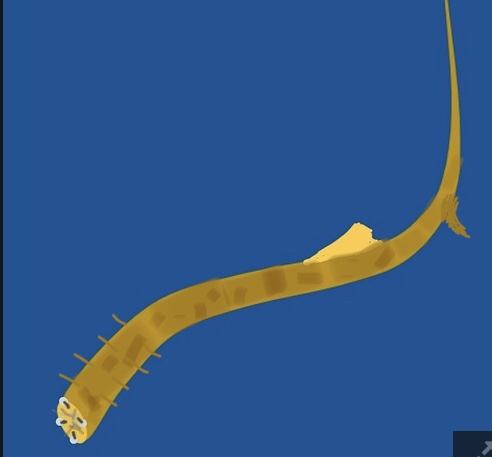
new species: Cirra Ocula Major
old species: Cirra Ocula
changes: Cirra Ocula Major’s front eye has become stronger. It uses this for finding food, while it’s back eyes are used for detecting predators.
new species: Cirra Ocula Minor
old species: Cirra Ocula
changes: Cirra Ocula Minor’s tentacles have gained even more motor control and they now have very small spikes on them
New species: cirra mhara coltach
Old species: cirra ocula
Changes: the tentacles around cirra oculas mouth have evolved into filter like “teeth” (which are actually made out of muscles) it can move mouth horizontally so they can get as many plankton as it needs
Should I post this in my last post?
Nah I think your good. Also I was thinking about making an evolution like that but you beat me to it!
new species: grvacodia predatorus
old species: grevacodia cerebrusi
changes: predatorus got bigger, it’s up to 0.9 mm to 1.2 mm, it also started ambush hunting other creatures with the help of its divots, the symbiosis between it and camun still exists though. no physical changes.
new species: grevacodia cerebrusi
old species: grevacodia cerebrusi
changes: cerebrusi becomes more social, communicating with other cerebrusi worms via touch, this means their brain size increases a little bit.
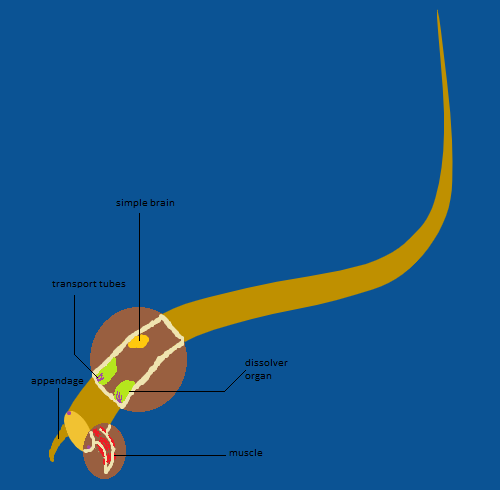
new species: novum predatorum opticanus
old species: novum predatorum opticanus
changes: its teeth are now made out of calcium carbonate instead of hard skin.
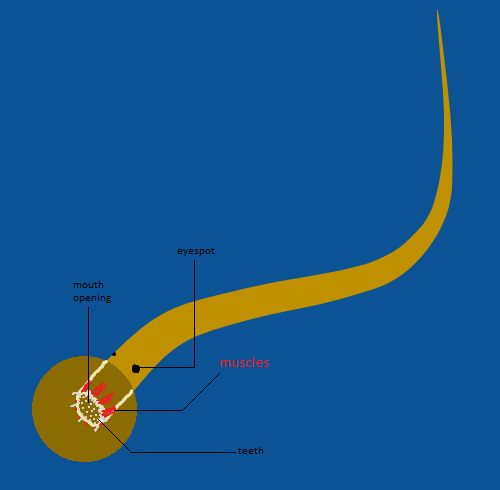
new species: grevacodia crebratectus
old species: grevacodia cerebrusi
changes: Crebratectus has evolved cartilage around its dissolver organs and its brain, which keeps this area rigid and slightly protects against leeching in that area
An explosion of life has occured in the Kakhittian oceans. Firstly, the Acceleratio Chordato has evolved a primitive backbone, mirroring other species on other, farther worlds. This gives it improved flexibility, but the nature of the Surav worms is that they are already pretty flexible, so this only helps somewhat. However, it is still an advantage. The Mandibla Camun Hakis has evolved a fleshy gamete-producer which allows it to mix well within divots made by the grevacod worms. These are like breeding sites for them. An interesting side effect is that gametes can get picked up because of the major activity near the divots, and they get taken to other corners of the ocean. The Hakis has spread this way, but it is hard(er) for it to survive without the help of a Grevacod. The Cirra Ocula has gained two derivations, the Major, which has gained a bigger eyespot, and the Minor, which ow has thorny tentacles that they can move from straight in front of them to almost behind them, and each individually. The Cirra Ocula has also had a species split off, the Mhara Coltach, which has turned the tentacles into filters, and given it a much bigger mouth. They skim near the surface, feeding on algae and other small organisms. The Grevacodia clade has diversified, with a new addition being the Grevacodia Predatorus, a worm that ambushes worms and Saetors above it by settling into the divots, then lunging out and grabbing them down for the Camun and Hakis to tear apart. The Cerebrusi also evolves, it’s brain expanding as more and more nerve cells form near the skin. They interact with their charges and with each other by touch. Nothing much has developed out of this, but an interesting behavior may form because of this evolution. The Grevacodia genus has also gained the Crebratectus, which has a cartilage proto-skeleton near it’s dissolvers and brain. This makes it harder for the Lechus and micro-parasites to exploit it. The Opticanus has had mutations, which have changed it’s teeth into calcium carbonate, allowing it to make even larger rips. However, the teeth are just nubs as of now, although that may change with the worm.
It isn’t the best drawing, unfortunately, but it’ll do. Introducing the Iomubae Saetor! A branch off of the Causticitus, this toxic algae had a mutation, causing it to form a new multicellular organism. This organism is very simple, cruising the waters using it’s multiple macroflagellae, and absorbing nutrients and other microorganisms. They are easily engulf-able by the smallest Minima, which brings me to my second event.
The last Minima worm hangs lifeless in the water, and then lifts up, and begins to float to land, where nothing is around to eat it. Ironically, it was the first Surav worm to wash ashore. The end of a species, and a false start to the era of terrestrial beings. Kakhitt doesn’t have anything on land, currently, but in the future, that may change.
You can begin to evolve the Arruptiors now! I like the interactions between the Grevacod worms and the Camun/Hakis, but for it to get any further, the Camun/Hakis will probably need to develop some sort of rudimentary brain, or any sort of processing organ that allows it to take things in. Otherwise, looking good!
New species: cirra mhara coltach
Old species: cirra mhara coltach
Changes: it changed its head shape and filters so it can get even more plankton
New species: acceleratio ovumaccumsan
Old species: acceleratio chordato
Changes: chordato has evoled a more advanced reproductory system now it lays it eggs and it then the eggs get impreganted outside then a larve of sorts is created the larve feeds only on carrion of arruptiors
And when it get gets to a sertain stadium it digs itself into sand and creates a sort of cocoon and from the cocoon gets out an adult (the larve is 0.45mm)
New species: arruptior venatione
Old species: arruptior paevis
Changes: aroundarruptiors mouth has evolved a quadruple appendages for hunting worms and putting it inside their mouths
I’m off to bed, but just a few suggestion before I approve these evolutions.
One, please add the change of head shape into the sùilean’s evolution, and also, why does the excogitatoris need to remember anything? It doesn’t have any territory as far as I know.
Better? I think I made it a bit better. Sorry that I changed the brain into larval stage.
And sùilean right now or the next evolution?
new species: Mandibla Camun Hakis
old species: Mandibla Gibbus Hakis
changes: Hakis has evolved primitive legs on the front of its body, Hakis’ backs still float in the water.
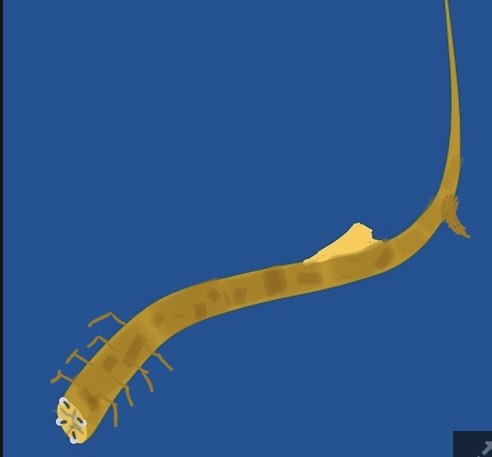
new species: Cirra Ocula Major
old species: Cirra Ocula Major
changes: Cirra Ocula Major has evolved a brain in order to remember where food spots are and where the arruptiors aren’t.
new species: Cirra Ocula Minor
old species: Cirra Ocula Minor
changes: Cirra Ocula Minor has evolved fins that it can use for quick turns. It also is now omnivorous.
